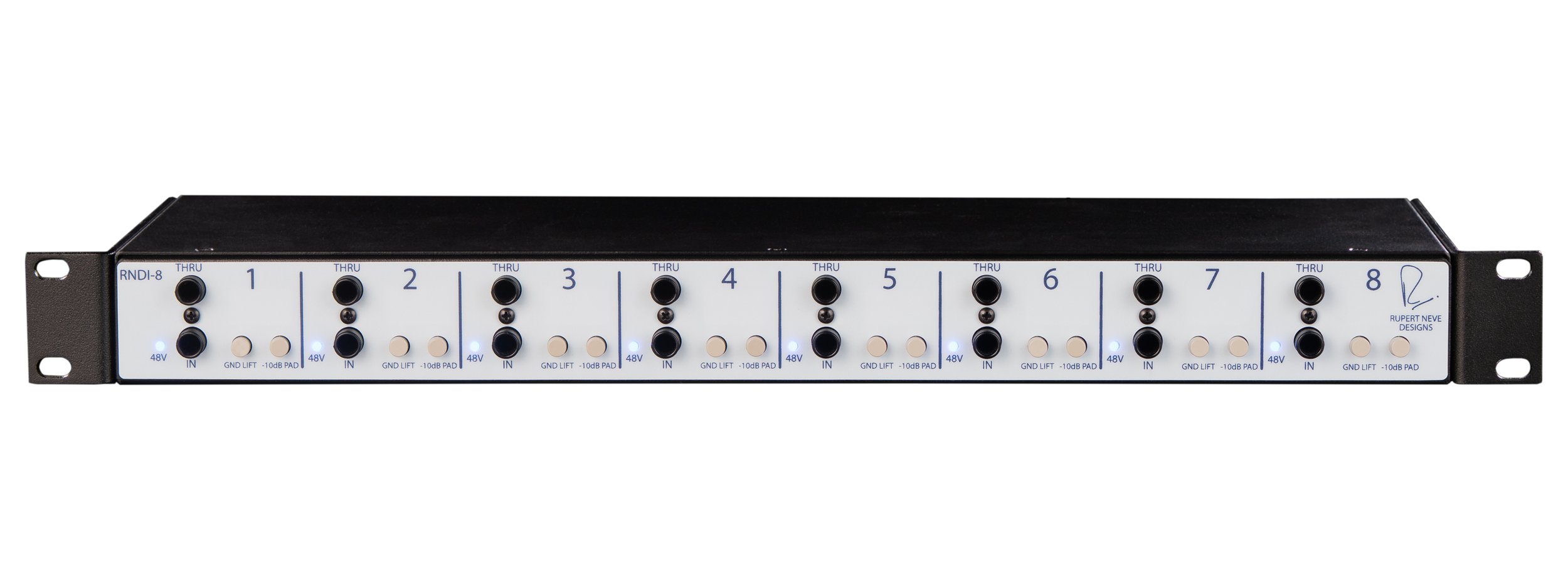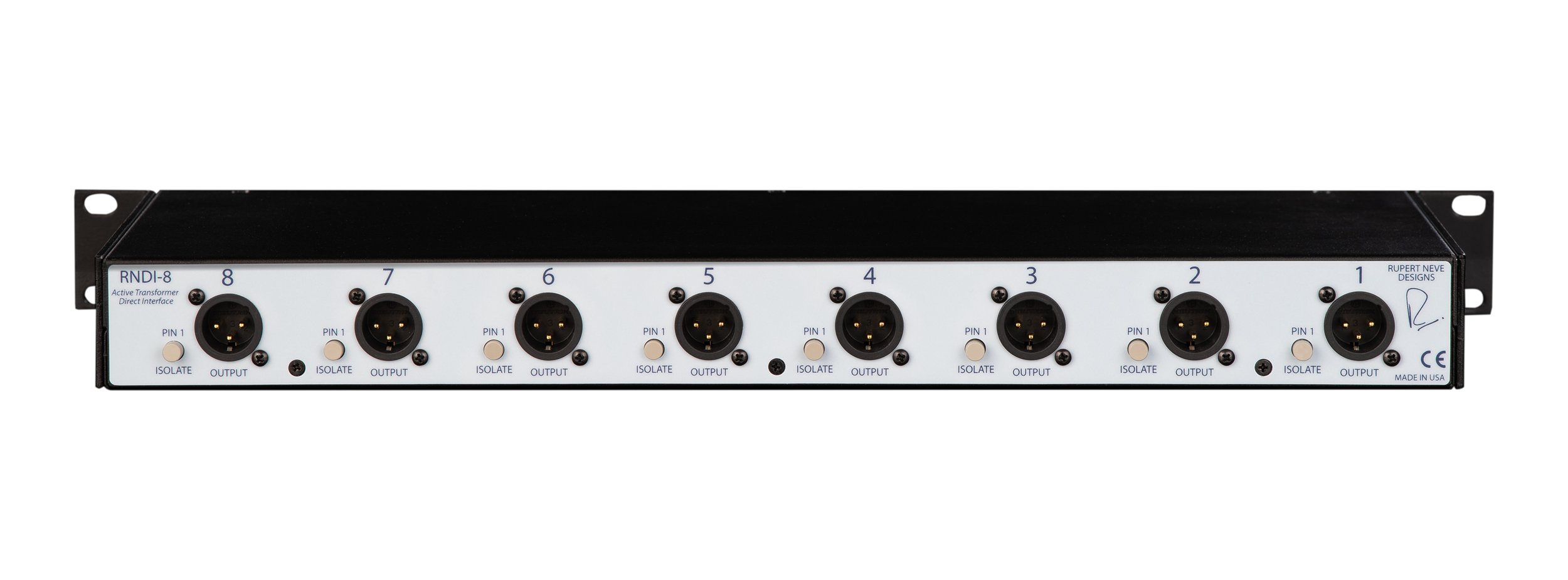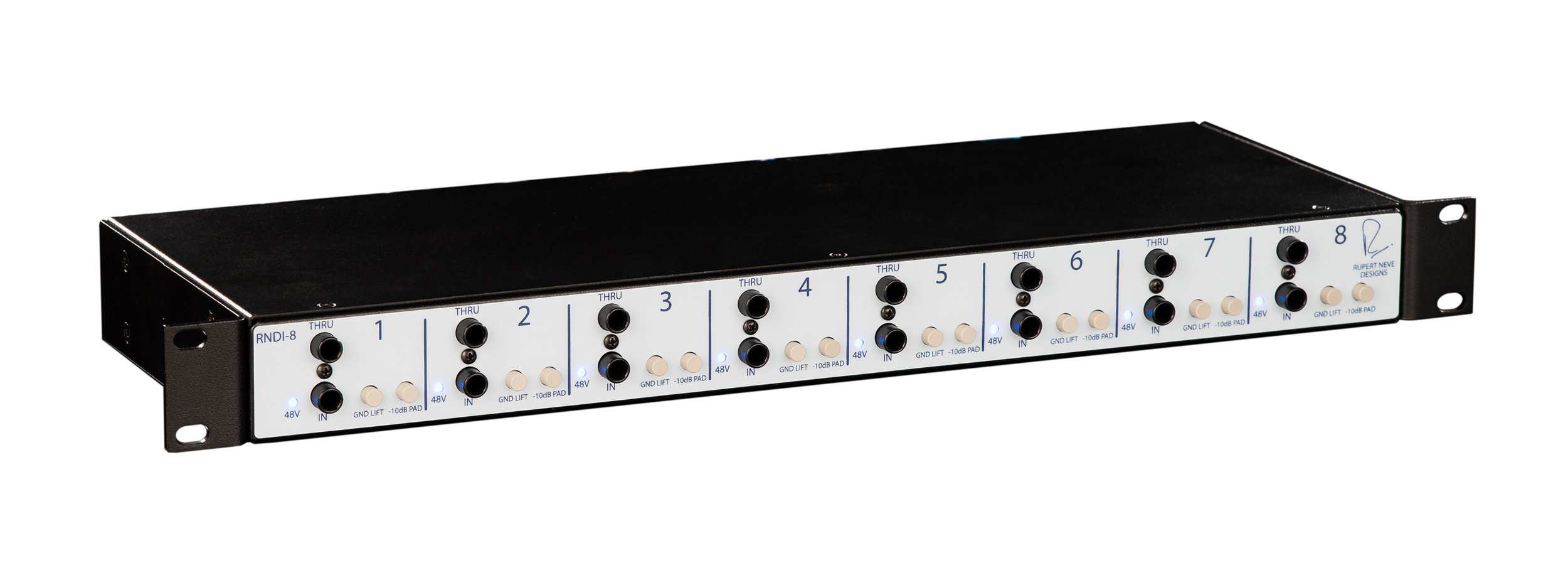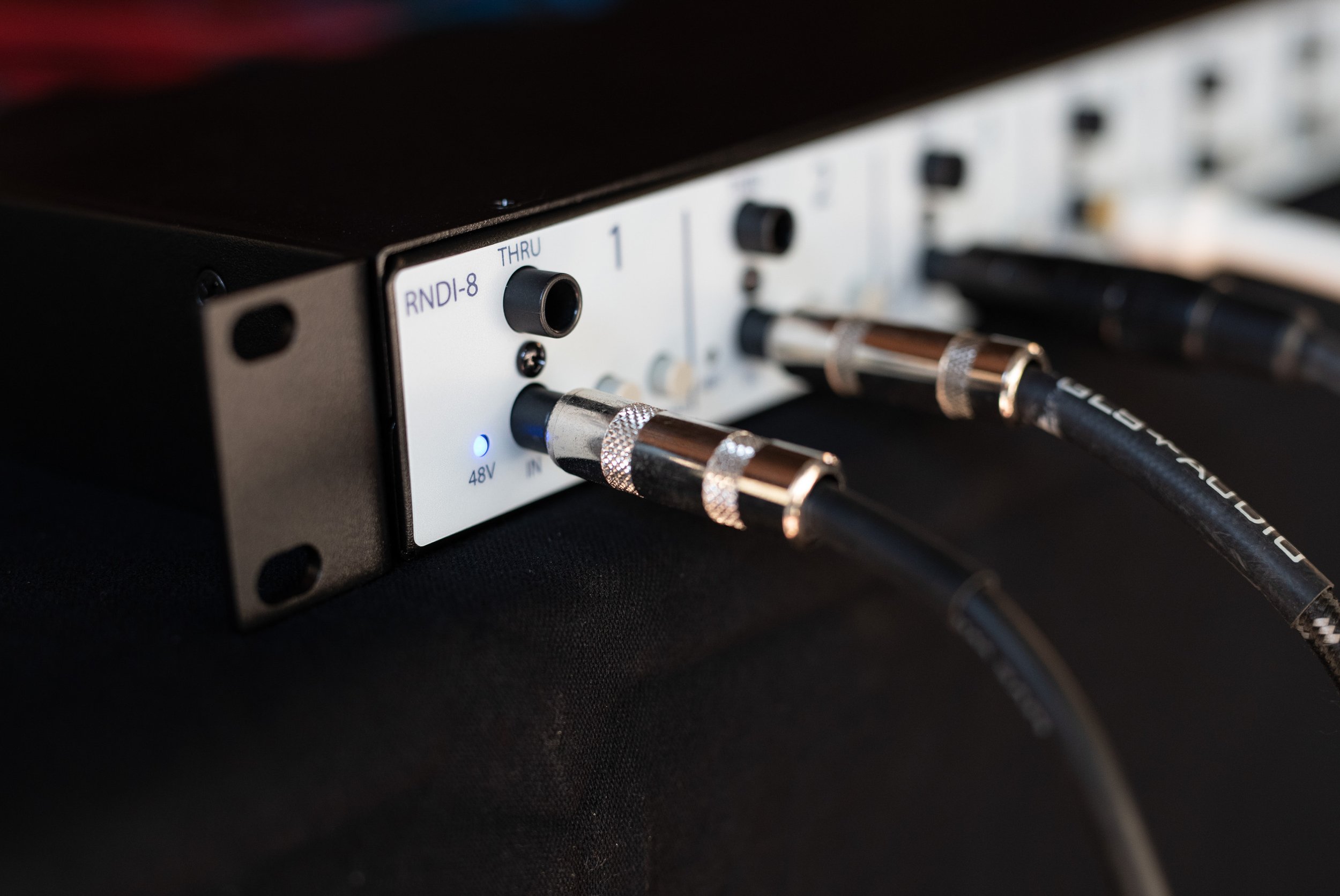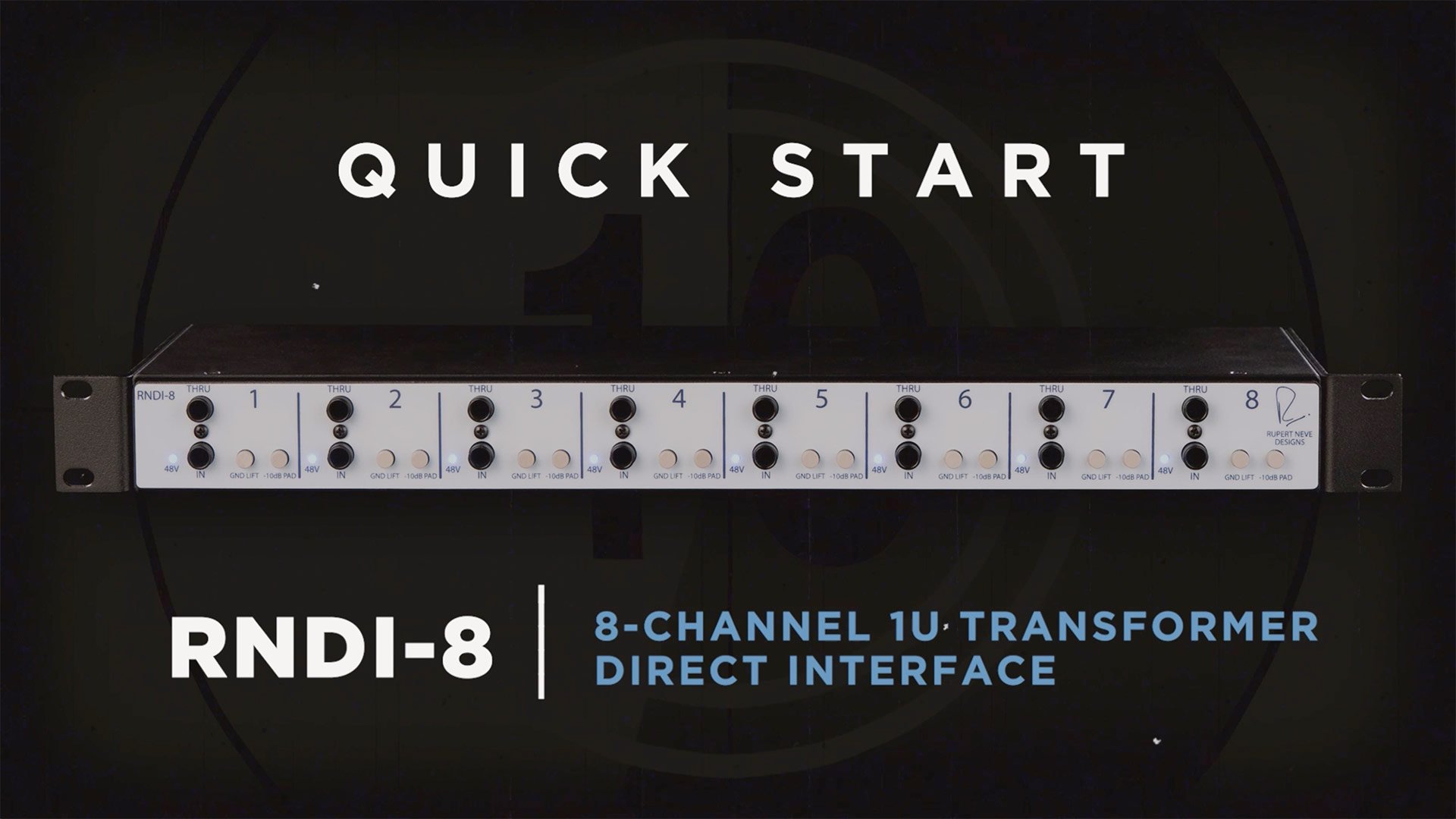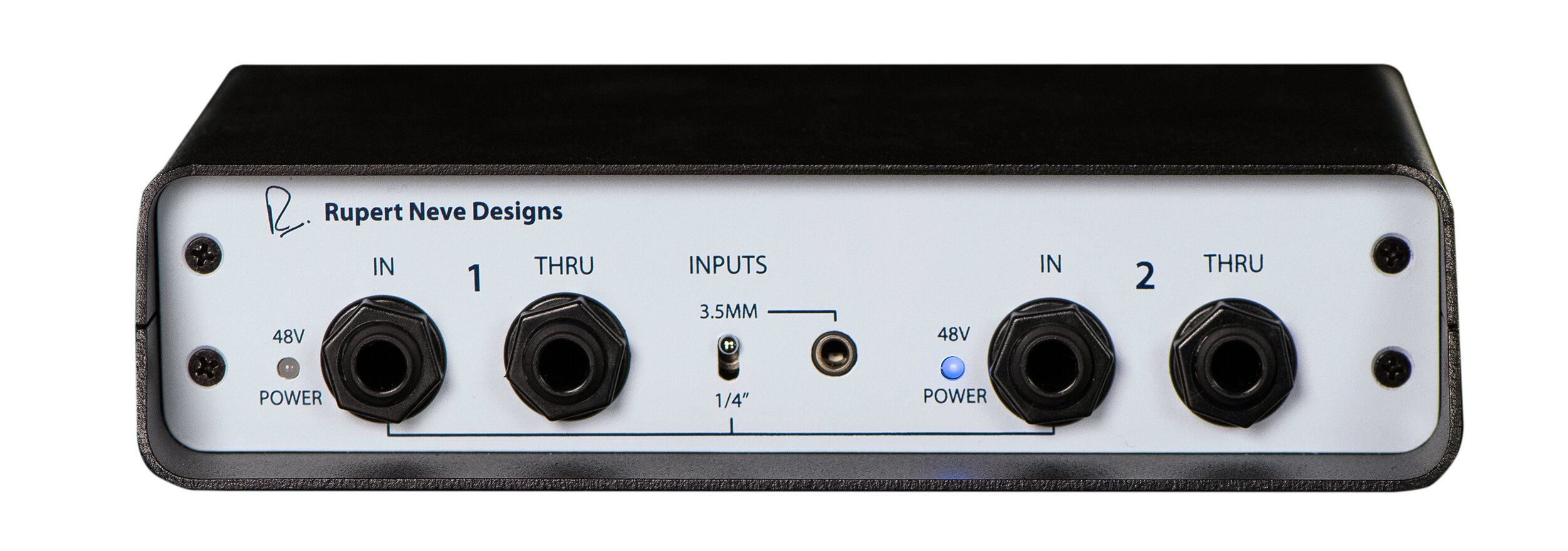
RNDI-8
8-Channel 1U Active Transformer Direct Interface
OVERVIEW / MEDIA / FEATURES / REVIEWS / SPECS & RESOURCESLegendary tone, unquestionable reliability. Eight channels of the superb-sounding RNDI in one rack space.
With over 25,000 channels shipped since its launch in 2015, the RNDI is firmly established as the direct interface of choice for many of the world’s most discerning musicians and engineers. Its custom transformers and discrete FET amplifiers deliver a vibrancy and clarity that captures the full harmonic depth of any source, and its unquestionable reliability has led to its adoption by thousands of touring artists.
The RNDI-8 puts eight channels of this beloved circuit into a single rack space, making it the ideal solution for high-end stage rigs, studios, and synth enthusiasts. With the RNDI-8, stunning direct sound doesn’t require extra work – it’s just there.
“...the most honest representation of the original performance and the instrument possible. I love it.”
The RNDI-8 consists of eight independent channels of RNDI Active Transformer Direct Interface in a single rack space, providing instrument direct injection for electric guitar & bass, synthesizer, keyboard, piezo pickup, or any other instrument-level source.
The discrete, class-A circuit topology is built around Mr. Rupert Neve’s custom transformers, resulting in outstanding sonic performance and supremely natural sound from 5Hz all the way out to well beyond 90kHz. Each channel can handle typical input levels up to +21dBu (+31dBu with the pad engaged), the low impedance transformer-coupled output drives long lines with minimal loss, and the rugged chassis’ steel construction is designed for a lifetime of stage and studio use.
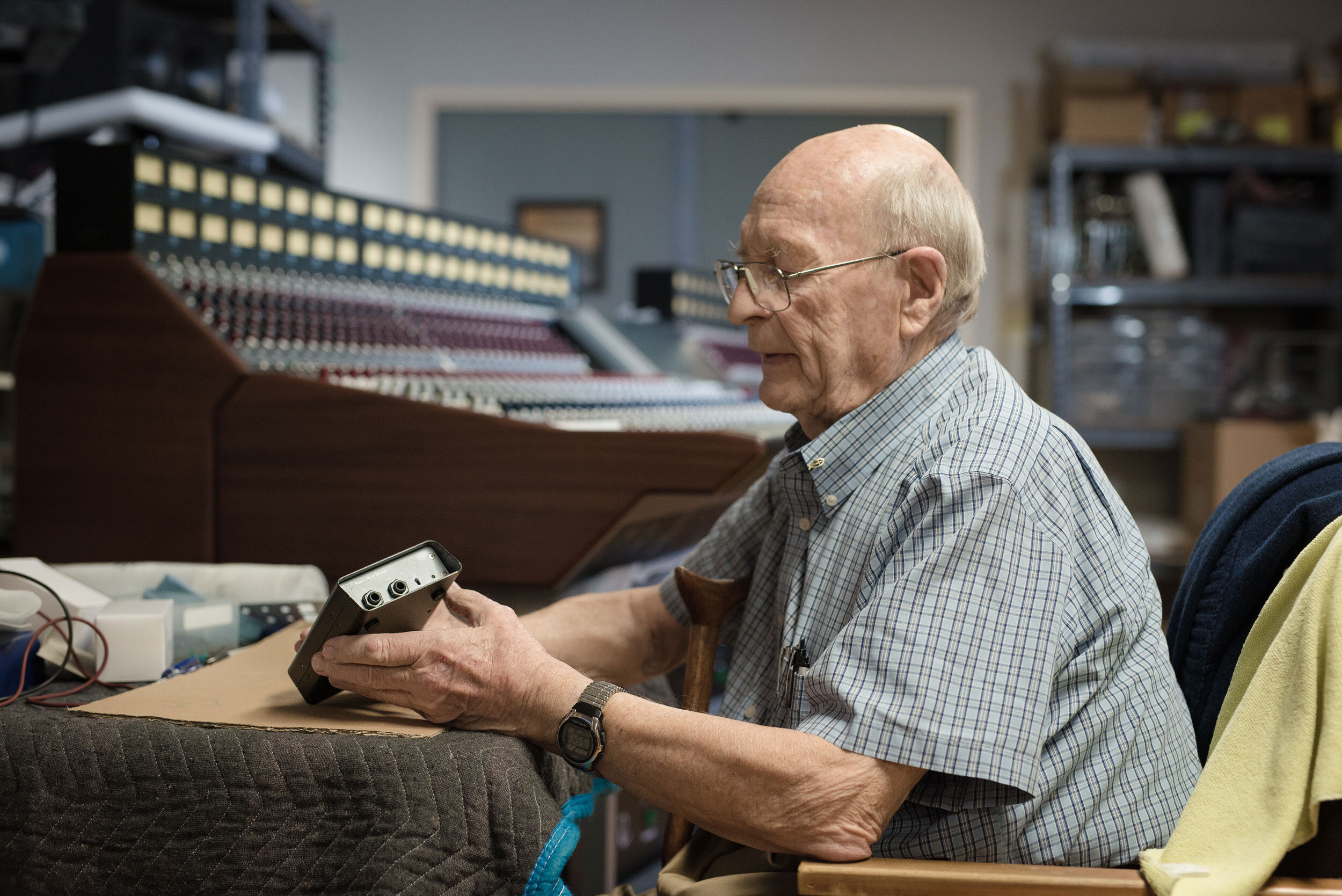
Transformer + Discrete FET: The Best of Both Worlds
The RNDI-8’s signature sound stems from the custom-designed transformers and class-A, discrete FET input amplifiers. The carefully designed union of these two elements is key to the RNDI-8’s unique accuracy, tone, and response.
THE EIGHT CUSTOM TRANSFORMERS
The RNDI-8’s custom-wound output transformers provide isolation while adding musical harmonics and dimension to the sound. The low impedance, transformer-balanced outputs excel at driving long cable runs, and the performance is consistent regardless of the connected equipment. This is important for both live and studio environments where the unamplified signal may travel 100ft or more before hitting an amplifier.
THE CLASS-A, DISCRETE FET INPUT AMPLIFIERS
The class-A & discrete FET input amplifiers in the RNDI-8 are powered by 48V phantom and create a high impedance input of over 2M Ohms, ensuring consistent performance with a wide variety of instruments. The class-A design eliminates crossover distortion that can otherwise be added to the signal and introduce unwanted upper-order odd harmonics. With the RNDI-8, the harmonic content is derived from the octave (2nd order) and fifth above octave (3rd order) relative to the fundamental. These musically relevant harmonics, present in subtle amounts, enhance the richness of the original signal and provide a distinctly musical response. Furthermore, the discrete aspect of the RNDI-8’s design means there are no ICs or digital components to potentially cause negative effects on the tone.
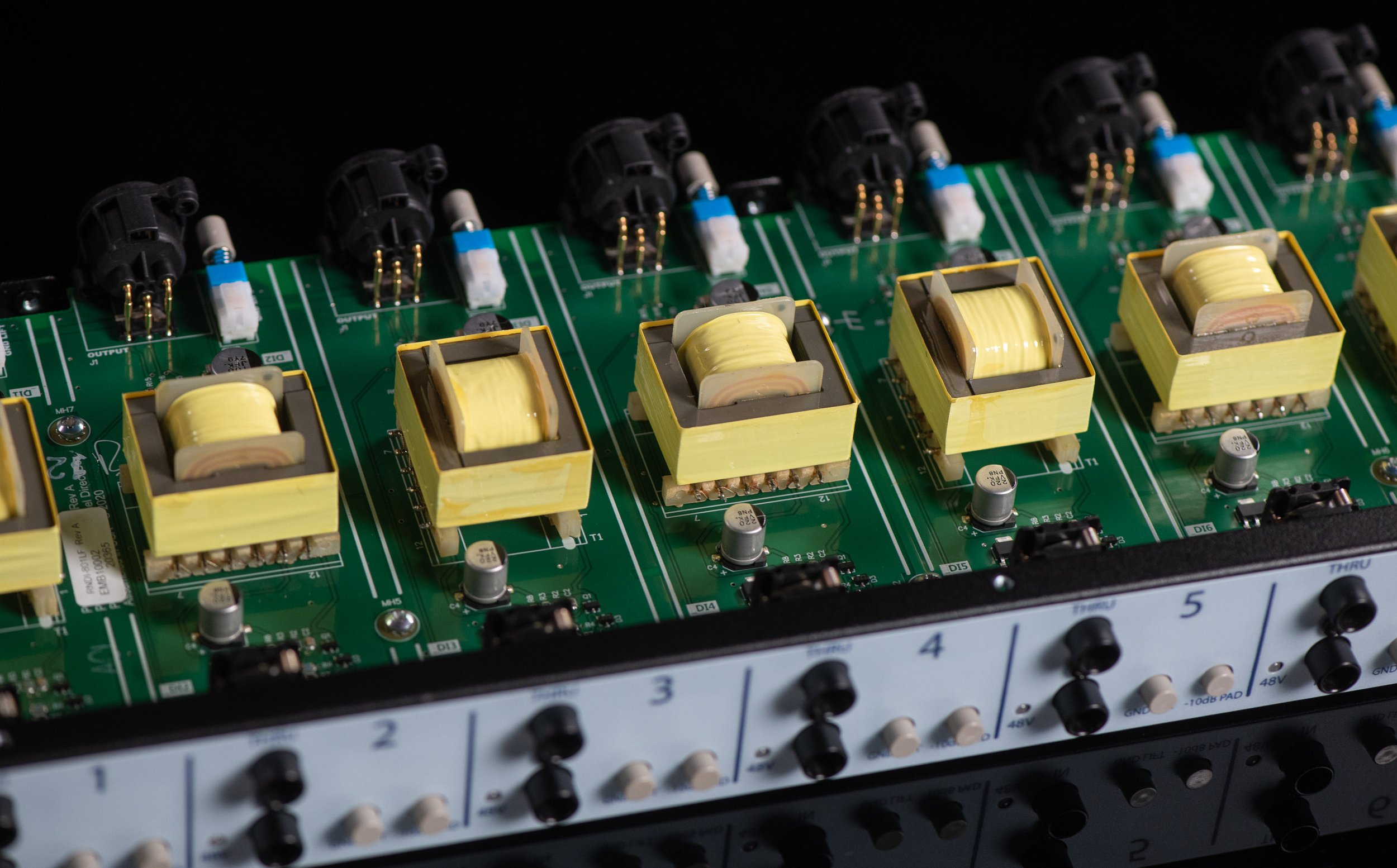
Giant Headroom, Wide Bandwidth
The RNDI-8 has a uniquely wide bandwidth with a frequency response stretching from 5Hz all the way past 90kHz. However, measurements are only part of the equation: couple this extended bandwidth with the output transformer’s harmonic enhancement and an absolutely thunderous low-end emerges, adding an unparalleled feeling of depth. All this happens without compromising any of the midrange richness or top-end sparkle that defines your instrument.
Maximum input level is a massive +21dBu (typical), making the RNDI-8 capable of handling not only instruments but also professional line-level sources like interfaces and drum machines. And with the addition of a - 10dB pad, that number soars to +31dBu – more than enough for even the highest-output DJ mixers. This makes the RNDI-8 incredibly versatile, enhancing the sound of nearly any connected instrument or source.
Two Distinct Ground Lift Options
Most direct interfaces include a ground lift switch at the output, and the RNDI-8 includes this standard DI ‘lifting’ option via eight individual ‘Pin 1 Isolate’ switches on the rear panel. Engaging this button will usually eliminate common sources of hum in the signal path.
However, the RNDI-8 also includes eight ground lift buttons on the front panel which separate each channel’s circuit ground from the chassis ground, providing another helpful option to detect and eliminate unwanted ground hum.
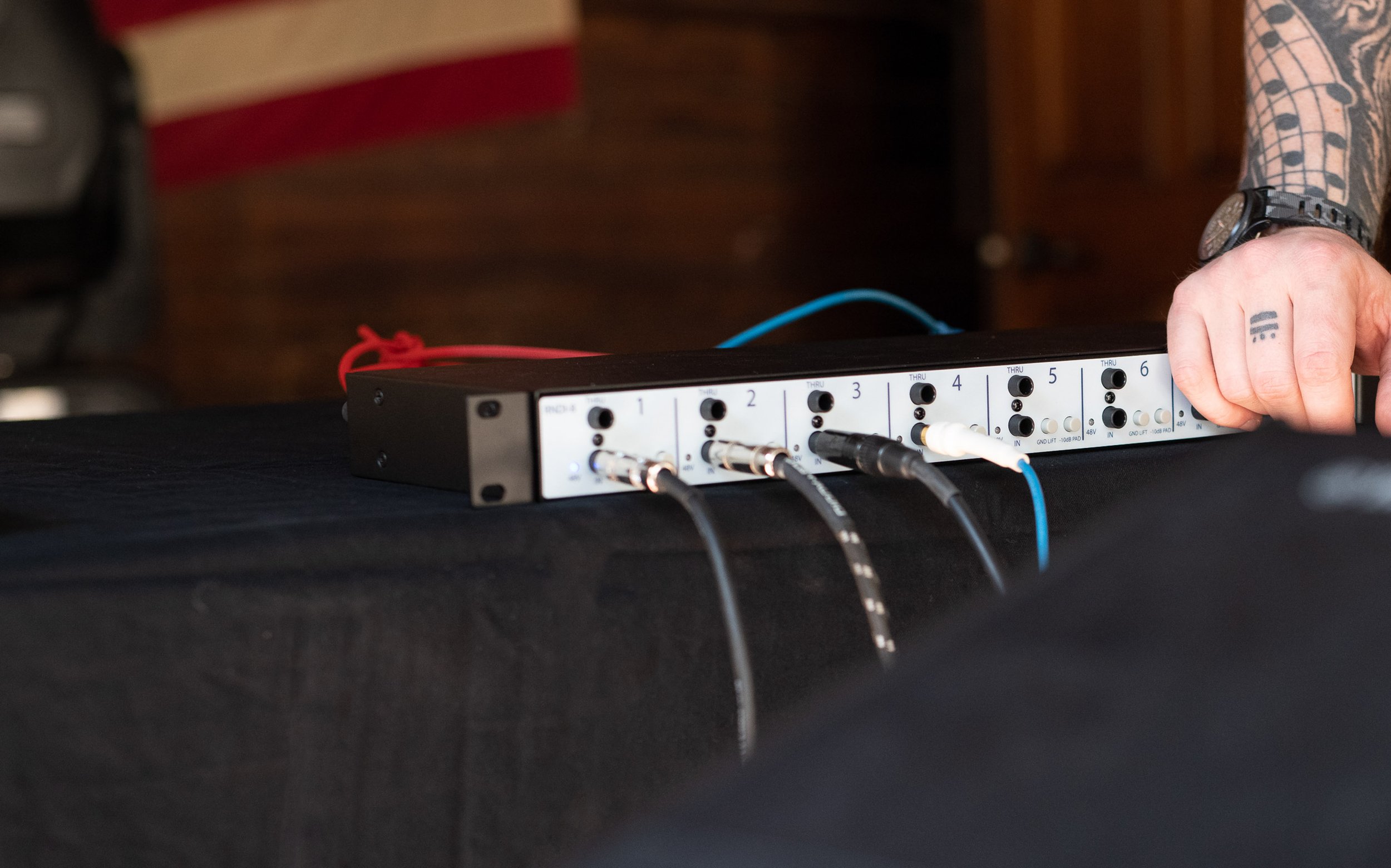
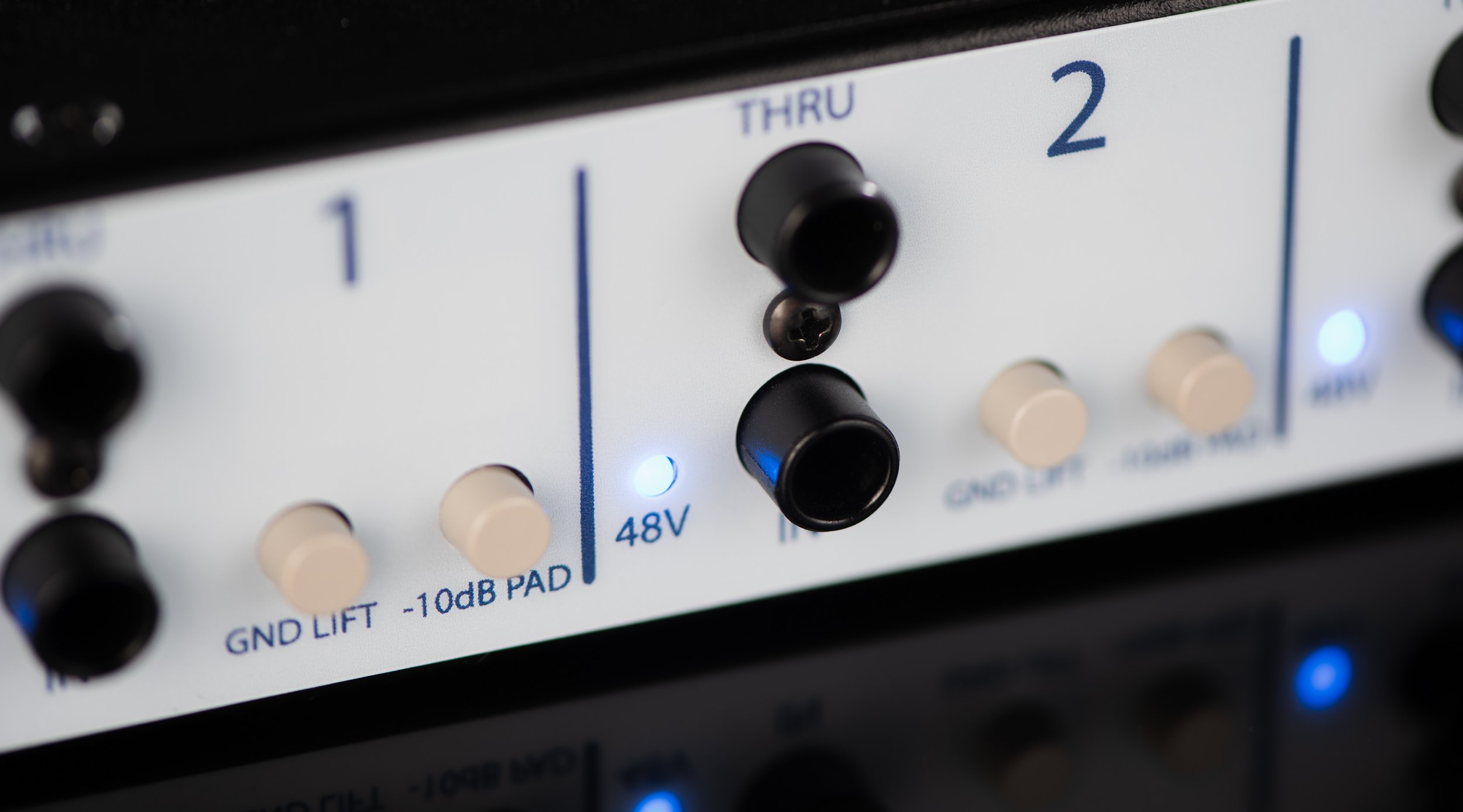

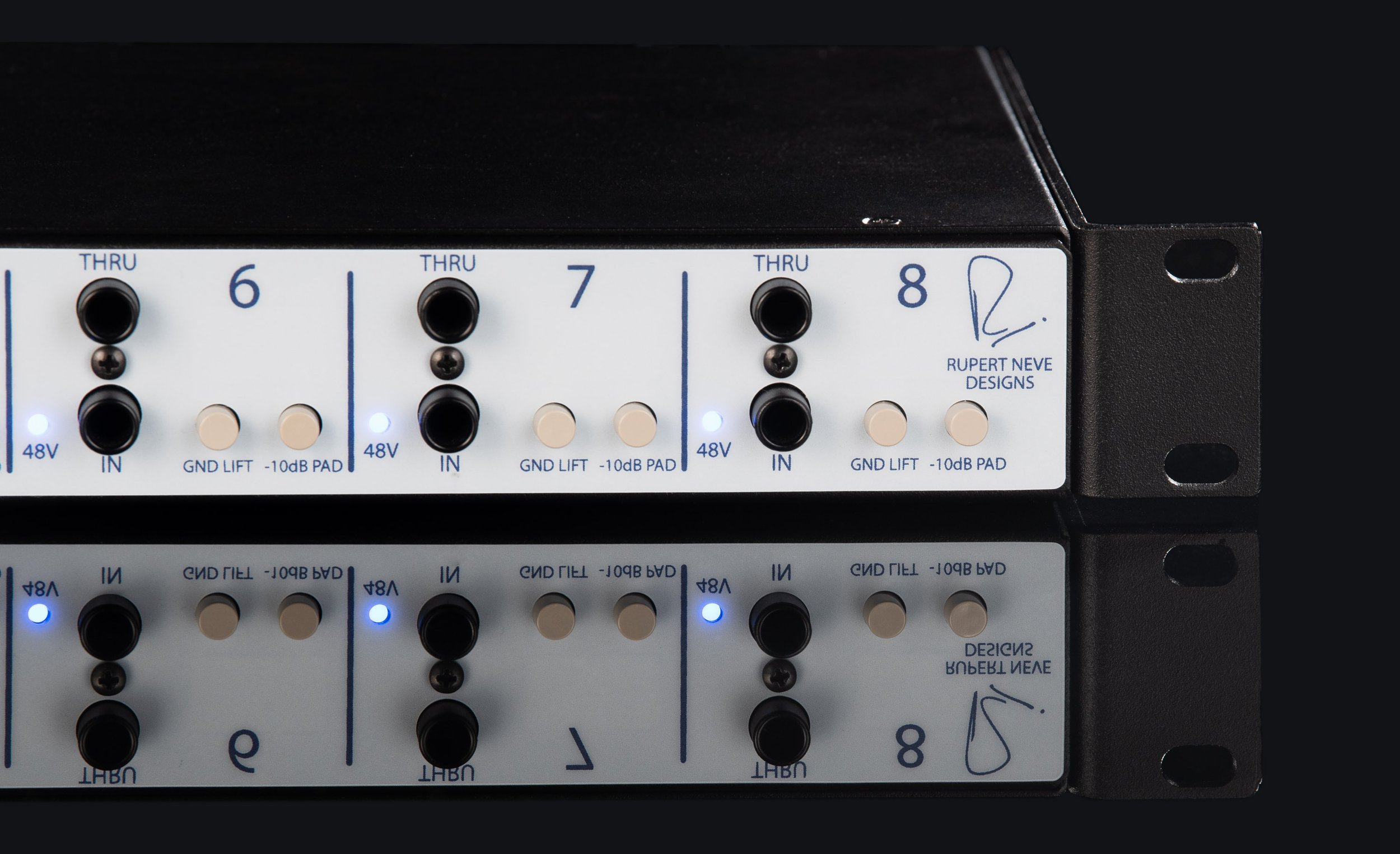
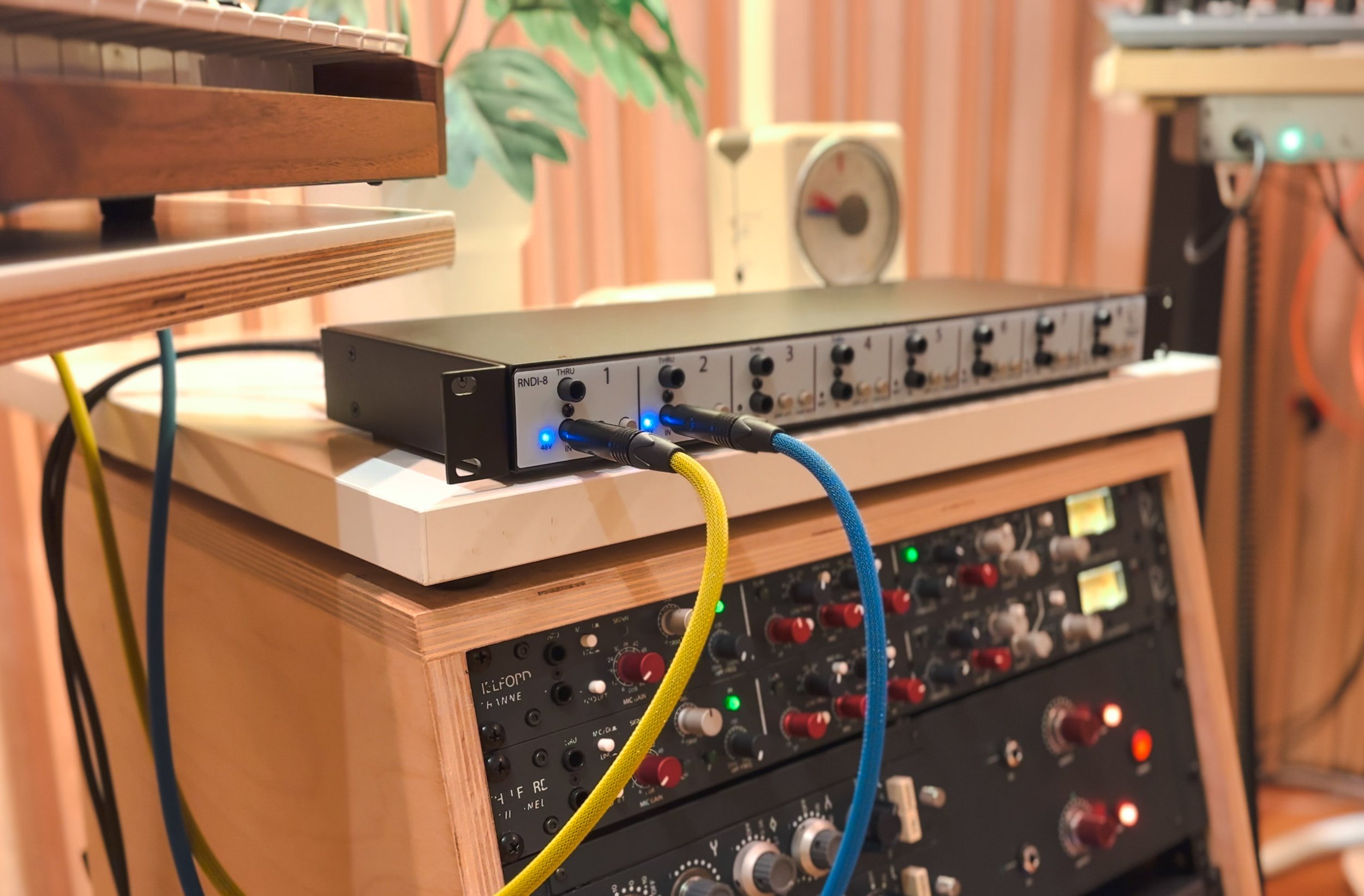
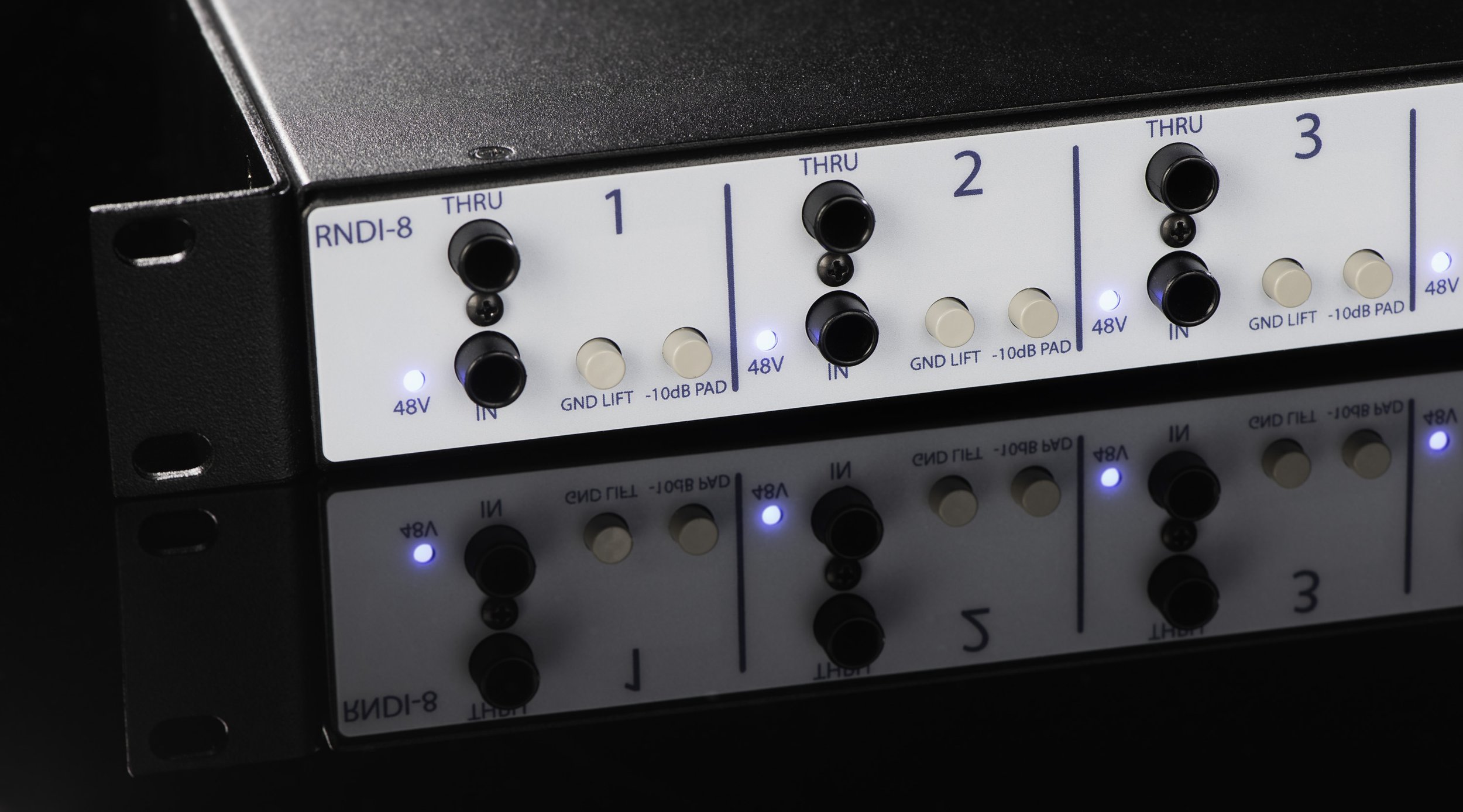
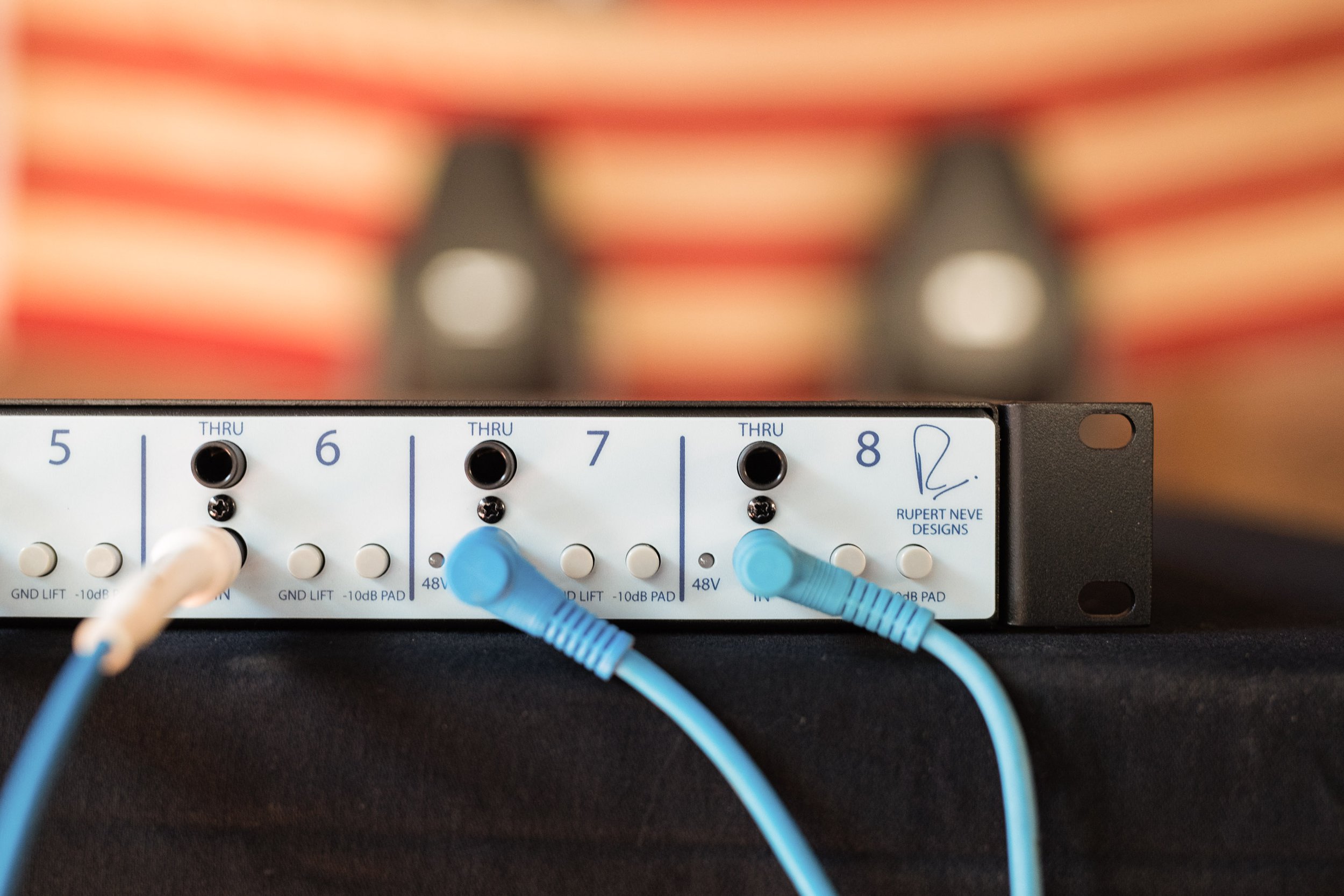

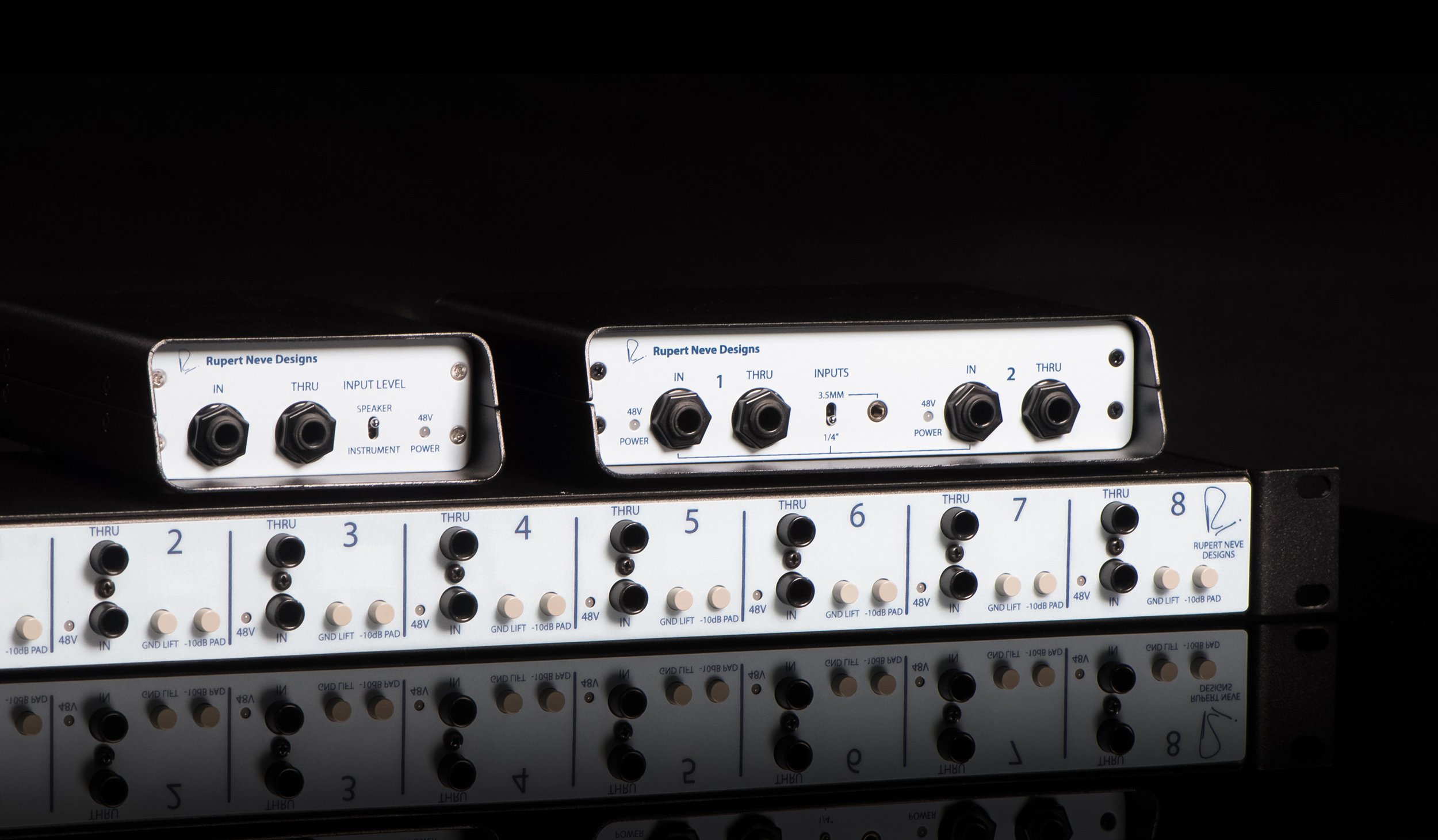
FRONT PANEL
IN
Hi-Z unbalanced input. ZIN = 2.2MΩ
THRU
Parallel ¼” jack that allows the user to pass the input signal directly to an amplifier.
48V
Indicates when +48VDC phantom power is active on the channel.
GND LIFT
Isolates each channel ground from the chassis ground.
-10dB PAD
Attenuates the input signal by -10dB (¼” THRU unaffected).
REAR PANEL
OUTPUT
XLR DI output utilizing custom Rupert Neve Designs transformer. ZOUT < 40Ω
PIN 1 ISOLATE
Isolates XLR Pin 1 output from circuit ground.
FEATURES
Groundbreaking Direct Tone
When class-A, discrete amplifiers meet Rupert’s custom transformers, magic happens. The RNDI-8 contains the unique components and design knowledge that makes it worthy of the Rupert Neve name.
Huge Headroom
Maximum input level is a massive +21dBu (typical), making the RNDI-8 capable of handling not only instruments but also professional line-level sources like interfaces and drum machines. With the addition of a -10dB pad, that number soars to +31dBu – more than enough for even the highest-output DJ mixers.
Rugged Solid Steel Frame
The rugged steel 1U chassis features an industrial-grade powder coating and is built to withstand the severe stresses of life on the road. The included bolt-on rack ears are reversible for multiple mounting options.
Takes All Kinds
The RNDI-8 performs with immense consistency across a wide variety of sources due to its 2M Ohm discrete FET input and huge headroom, providing superb sound for guitars, synths, basses, acoustic instruments, keyboards, and even professional line level devices.
Drive Longer Lines
The low impedance transformer coupled output is capable of driving long lines with unrivaled high frequency performance.
1/4′′ THRU Outputs
The THRU outputs can be used to feed amplifier inputs for reinforcement.
Ground Lift Options
Pin 1 Isolate switches are provided on the rear panel to help fix any problematic grounding, as well as Ground Lift switches on the front panel to isolate each channel’s circuit ground from chassis ground.
Phantom Powered
Each of the RNDI-8’s eight channels is powered by standard 48V phantom power. Power is indicated by blue LEDs on the front panel, one per channel.
REVIEWS
“It’s an incredible unit. Pretty much everything I do is DI – synths, guitar, bass – and this is the best starting point for that because you have the most honest representation of the original performance and the instrument possible…there’s this weight to the low end and a sheen to the top end that’s very pleasing. It doesn’t get brittle, and the low end stays tight…it’s a fantastic DI.”
Tycho
“Everything – my electronics, computer, my synths – everything goes through the RNDI-8. This sounds AMAZING. My FOH engineer told me even my computer sounds ‘less MIDI’! Everything is bigger, deeper, and amazing extra dimension.”
Pedro Eustache, Winds Soloist (Hans Zimmer Live)
“I mix FOH for a prominent country artist. We tour and play over 200 shows a year and we go through a lot of gear. I ran into someone who was using this for his bass DI line and I heard him do a comparison. I was sold instantly. So I finally bought one to use for an acoustic line in between the output of a Shure UR4D and the input of a Midas DL431. It literally took the tone and changed it immensely. Sounded like I had plugged it into a console in a studio. So I started progressively changing every DI on stage over to RNDI's. Today, I use 7 channels of RNDI for all my direct signals on stage. I haven't changed them all over just yet, but I swear I'm getting there. Eventually every DI line on deck will be RNDIs and I've never been happier, truly. The tone is truly untouchable.”
Joey Diehl
“…my secret weapon…it’s just something where I have no words for it. The magic of the color…it goes down to 12Hz, or 10Hz…you can’t believe the sonic colors you get out of it.”
Snow Owl
“Takes my pedalboard to the next level of clarity and headroom.”
“Excellent piece of gear. Very solid construction, zero noise, crystal clear signal.”
“I did some tracking last night with a Korg Grandstage through the RNDI-S and holy smokes brothers and sisters this box is amazing. Normally I add a lot of pro grade plugins on my piano track, but with this box in front of it, I added nothing and it sounded perfect. So good in fact, I had to come here an write this review. The price is steep but worth it. If your looking for the best DI on the market - you've found it.”
“WOW. So THAT is what my Nord is supposed to sound like. So THAT is what my Montage should sound like. So THAT is what my bass and wurly should sound like. Game changer.”
“As far as my guitar amp went (and its tone, not so much my talent!), the RNDI-S skyrocketed it to the next dimension; the place I'd been trying to coax it for a while now without success. I used to get so frustrated with that amp, which I felt was the culprit in a closed-off, dull, and sluggish sound. It seems that the Neve here fixes whatever issue in the signal chain that was preventing the amp from singing its fullest song. The resulting guitar sound now saturates completely and lights up the whole room - not just the inside of the cabinet. I was pretty floored by it all. I will just say that for the next few months or so, I will probably be getting out of bed in the morning thinking of doing things now made possible in my setup by this amazing machine.”
Customer Reviews via sweetwater.com

SPECIFICATIONS & DOWNLOADS
Note: All specifications are typical.
Input Impedance
Instrument Input: 2.2 MΩ
-10dB PAD Engaged: 200 kΩ
Output Impedance
Less than 40 Ohms
Maximum Input Level @ 1kHz
Instrument Input: +21 dBu
-10dB PAD Engaged: +31 dBu
Maximum Output Level @ 1kHz
+11 dBu
Frequency Response (30 ft. output cable, 10k equivalent load)
+/- 0.25 dB: 28 Hz - 50 kHz
+/- 1 dB: 14 Hz - 90 kHz
-3 dB: 5 Hz
Noise (Measured Output, Un-weighted BW 22Hz - 22kHz, Source Impedance 150 ohms)
Better than -110 dBV
Total Harmonic Distortion + Noise (THD+N%)
@ 1 kHz, +20 dBu Input Level: 0.35% Typical (2nd and 3rd Harmonic)
@ 1 kHz, -20 dBu Input Level: 0.009% Typical (2nd and 3rd Harmonic)
@ 20 Hz, -20 dBu Input Level: 0.9% Typical (2nd and 3rd Harmonic)
Power Requirements
Phantom Powered, 4.5mA Per Channel @ +48VDC
19” Rack Mounting Option
1RU reversible bolt-on rack ears
Product Dimensions (W x D x H): 19” (48.3 cm) x 8.125” (20.63 cm) x 1.75” (4.5 cm)
Shipping Dimensions (L x W x H): 24” (61 cm) x 13” (33 cm) x 4” (10.2 cm)
Shipping Weight: 9 lbs. (4.1 kg)
FREQUENTLY ASKED QUESTIONS
All of the RNDIs have an identical audio signal path. The only difference is in the features like the speaker mode on the RNDI, the 3.5mm stereo input on the RNDI-S, and the PAD on the RNDI-8.
Power for each channel of the RNDI-8 is supplied by standard 48V phantom power on the XLR output connection (provided by a connected microphone preamp or other appropriate 48VDC supply), and power presence is indicated by a front panel LED.
Yes, you can run a full +21 dBu line level signal into any of the RNDI-8’s eight inputs. Common line level sources would include audio interfaces, balanced keyboards, drum machines and samplers.
Yes, you can use a balanced TRS (tip-ring-sleeve) 1/4" plug into the RNDI-8. If your source is unbalanced with a TS output, you should use a TS (tip-sleeve) 1/4" cable.
No. It is true that the higher input impedance of an active DI will generally result in greatly enhanced frequency response on a passive bass, but there are still advantages to an active DI on active basses as well. We recommend testing for yourself and letting your ears decide what tool works best.
No, the RNDI-8 THRU is entirely passive.
Since the RNDI-8 contains 8 separate DIs in one chassis, we opted to give you additional 'ground lifting' options to further help diagnose and eliminate ground hum issues in your system. The 'Pin 1 isolate' button on the back provides our standard DI 'lifting' option by isolating Pin 1 of the XLR output, whereas the 'ground lift' button on the front actually isolates each channel's circuit ground from the chassis ground.


